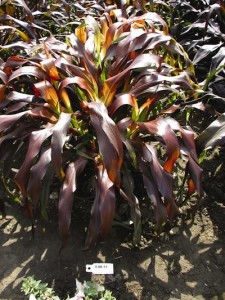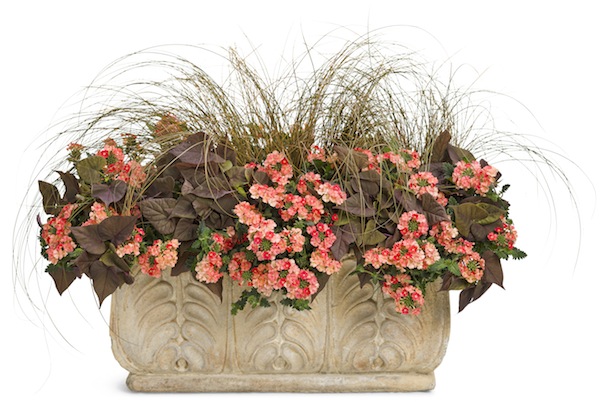
Wind Dancer love grass. Photo courtesy Ball Horticulture
We usually think of ornamental grasses as hardy perennials, which many of them are. But, there are some fabulous ornamental grasses that are annuals or tender perennials grown like annuals because they will be killed by Indiana’s winters.

Jester ornamental millet. Photo courtesy Ball Horticulture.
Upright seasonal grasses can be used as the centerpiece in containers. Those that form soft mounds look great cascading over the rims of pots or the edges of window boxes. Most of these upright and mounding grasses also work well in the ground.
Don’t shy away from these grasses just because they are marketed for summer use. Many of the tender grasses keep on giving in the winter just like their hardy counterparts. Their seed heads dry and the foliage changes color, adding movement, sound and natural look in the dreary winter landscape.
Here’s a sampling of some tender grasses:
If you liked the All-America Selection ‘Purple Majesty’, a 5-foot tall ornamental millet (Pennisetum glaucum), you’ll love the smaller version called ‘Jester’.

Jade Princess ornamental millet. Photo courtesy Ball Horticulture.
‘Jester,’ at about 40 inches tall, is shorter than its majestic cousin and its color also is different. ‘Jester’ foliage starts out almost chartreuse. It takes on purple highlights and by the end of the season, it is a deep bronze. ‘Jester’ can be grown in sun or shade. The flower will get about 12 inches tall; however, this plant is grown for its foliage.
‘Purple Baron’ has the deepest, richest color of the ornamental millets. This one has shiny, purple foliage and gets about 3 feet tall. ‘Jade Princess’ has almost chartreuse foliage with large brown inflorescens on 3-foot tall plants. One of the neat things about this species is its molasses fragrance.
‘Wind Dancer’ (Eragrostis elliottii) is at the top of my favorites list. A billowy North American native grass, ‘Wind Dancer’ has bluish-green foliage and buff-colored flowers that bloomed all summer.
And although this grass looks beautiful in summer, it is gorgeous in winter, retaining most of its seed heads and overall form. ‘Wind Dancer’ gets about 3 feet tall and wide and does best in full sun to part shade.

Toffee Twist carex, Peachy Keen verbena and Sweet Caroline Sweetheart sweet potato vine. Photo courtesy Proven Winners
‘Toffee Twist’ (Carex flagellifera) is a sedge that really does best in a container. Because of its toffee brown color, it can look dead in the landscape. However, it looks terrific with chartreuse, pink or purple companion plants in a container. Technically, not a grass, this sedge gets about 15 inches tall and 24 inches wide and does best in part shade.

Fiber optic grass. Photo courtesy Proven Winners

Pink Crystals melinis. Photo courtesy Proven Winners
‘Pink Crystals’ ruby grass (Melinus nerviglumis) was picked as a winner by Illinois Master Gardeners, praised for its showy pink flowers. Nicely mounded, ‘Pink Crystals’ gets about 3 feet tall and wide and does best in full sun to part shade.
Fiber optic grass (Isolepsis cernus, formerly Scirpus) looks a lot like a long turf grass, which is why it doesn’t work so well in a flower bed. It has about a 12-inch height and spread. Plant this in a pot or window box so that it cascades over the edge.
